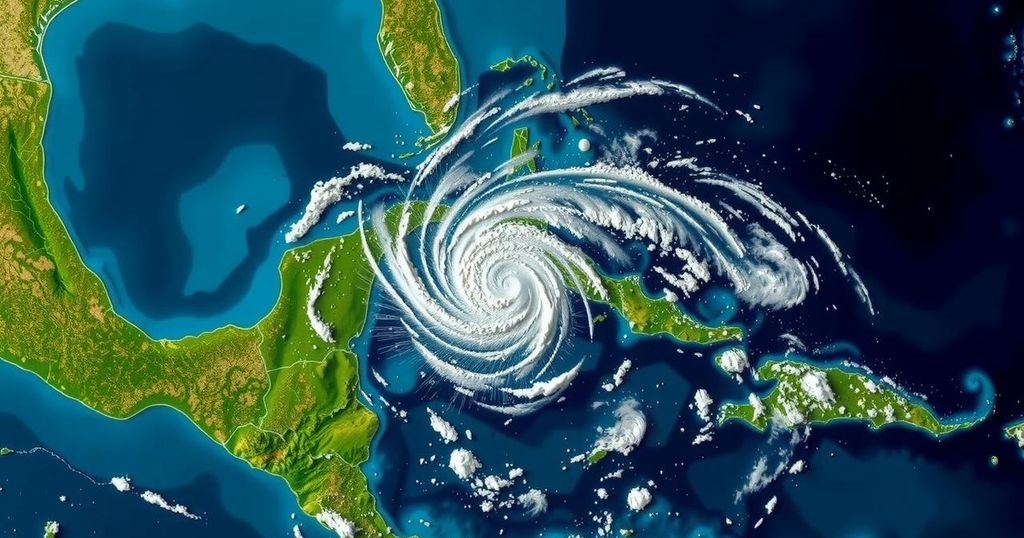Hurricane Rafael is moving westward across the Gulf of Mexico and is expected to weaken to a tropical storm by Sunday. After impacting Cuba as a Category 3 storm, the hurricane poses further threats of dangerous surf and rip currents in the Gulf region, although warnings for Dry Tortugas have been lifted. The likelihood of a new tropical disturbance forming nearby remains low.
Hurricane Rafael, currently classified as a Category 2 storm, is anticipated to slowly progress westward across the Gulf of Mexico over the coming days. The storm is expected to encounter unfavorable conditions, including significant wind shear, dry air, and cooler sea surface temperatures, which may collectively contribute to its weakening. Forecasts from the National Hurricane Center indicate that by the time Rafael approaches Mexican shores on Sunday, it may revert to a tropical storm status. As per the latest update on Thursday at 7 a.m., the tropical storm warning for the Dry Tortugas has been lifted, with no other warnings currently in effect. However, forecasters caution that the storm poses potential risks, including life-threatening surf and rip currents throughout the Gulf region. On Wednesday, Hurricane Rafael made landfall in western Cuba as a Category 3 hurricane, causing substantial disruption to the country’s already strained electrical infrastructure. This incident follows closely on the heels of Hurricane Oscar, which impacted the eastern part of Cuba earlier in October, resulting in eight fatalities and extensive damage to approximately 20,000 homes. Additionally, the hurricane center reported a decreased likelihood of a new tropical disturbance forming north of Puerto Rico and Haiti, now assessed at only a 20% chance of developing into a tropical depression within the next two to seven days. The next storm name on the official list is Sara.
Hurricanes pose significant threats to coastal regions, especially in areas like the Gulf of Mexico and the Caribbean, where the climate and geographical features can produce severe weather. The impact of hurricanes in these regions extends beyond immediate destruction, affecting infrastructure, livelihoods, and emergency responses. The recent history of hurricanes in Cuba highlights the challenges faced by the nation in disaster management, particularly considering its limited resources for recovery. Understanding the path and potential evolution of hurricanes such as Rafael is essential for effective preparedness and response efforts in affected areas.
In summary, Hurricane Rafael is moving westward across the Gulf of Mexico with indications that it may weaken to a tropical storm before reaching Mexico. After impacting Cuba severely, the storm presents threats in terms of surf and rip current conditions. It is important for residents and authorities in the Gulf region to remain vigilant and informed as the situation develops.
Original Source: www.tampabay.com






